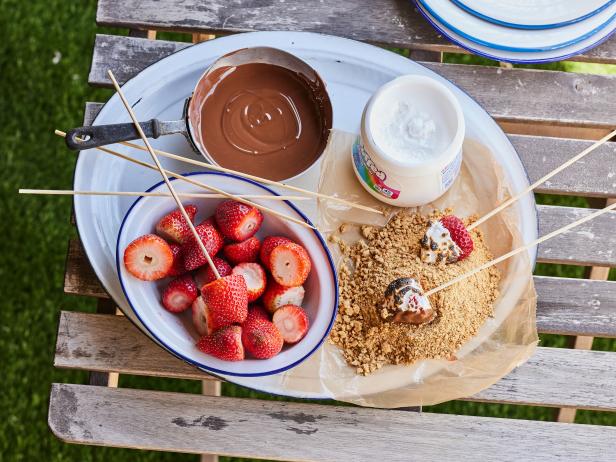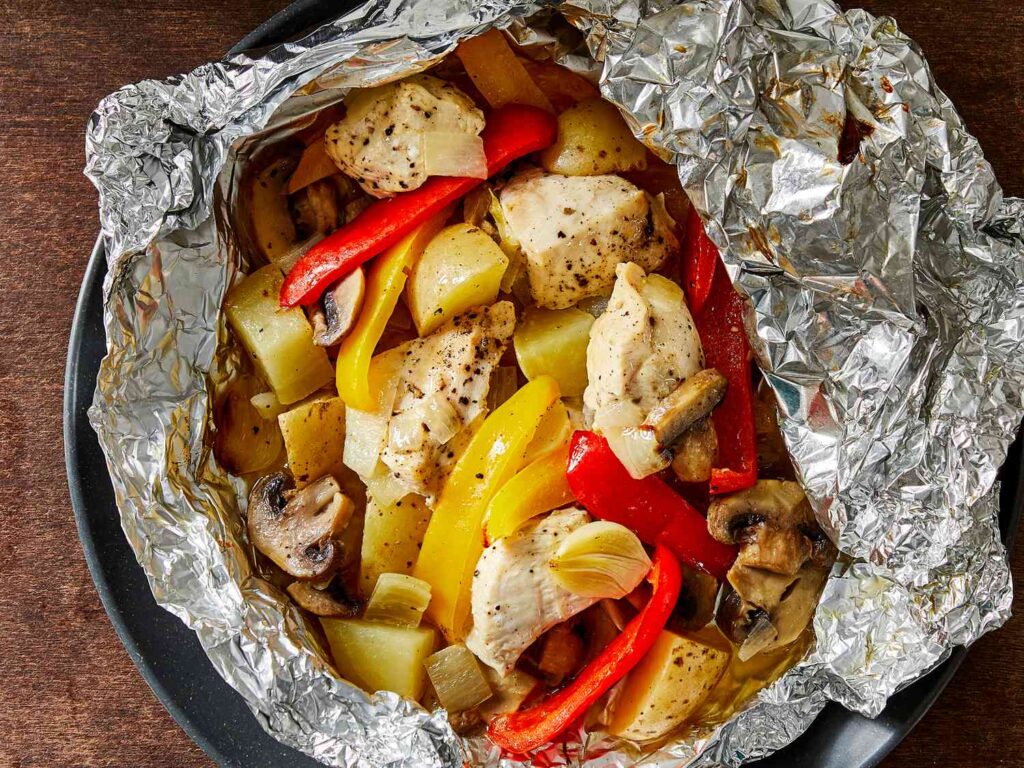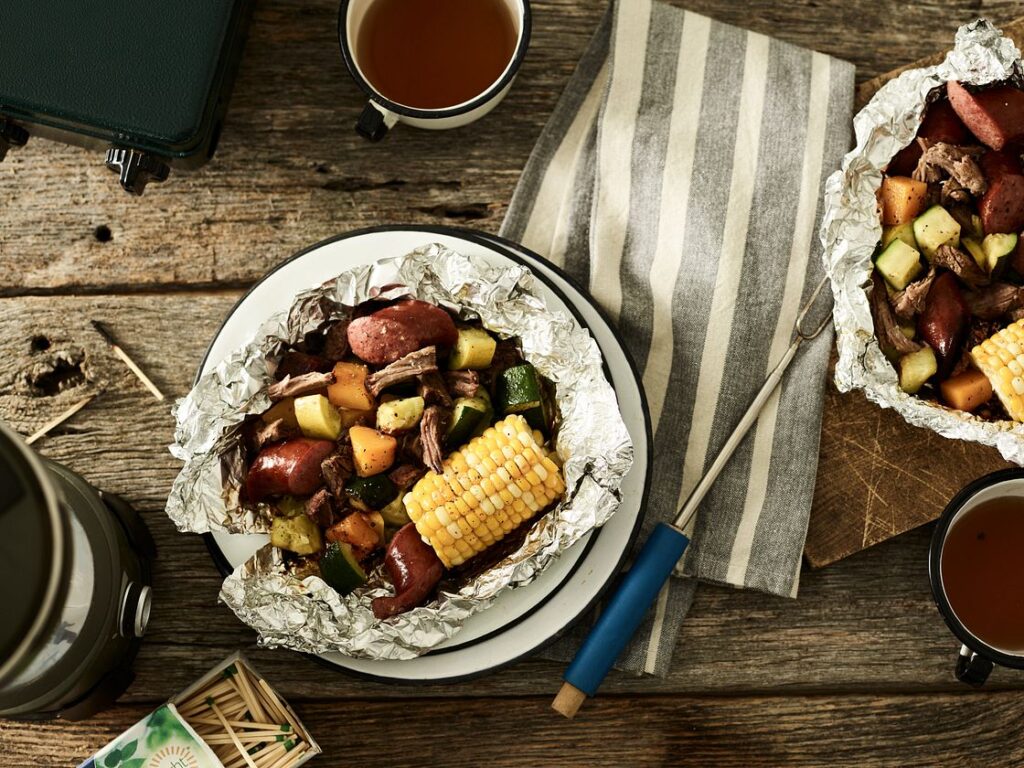Cooking Creatively: Delicious Campfire Recipes for Woodsy Dining
Embarking on a journey through the enchanting embrace of nature, where the verdant canopy whispers ancient secrets and the campfire crackles like the cozy hearth of the wild, invites an opportunity to explore culinary creativity. The art of campfire cooking transcends mere sustenance, offering a canvas where the palette of natural flavors can be melded under the open sky, creating dishes that resonate with the spirit of adventure. This odyssey of taste requires not just an understanding of ingredients but a harmonious blend of imagination, technique, and the raw, unrefined charm that only the wilderness can bestow upon food.
In the heart of the woods, where the boundaries between the human and the natural blur, cooking becomes an act of intimate connection with the environment. Ingredients foraged from the land and the fruits of one’s fishing or hunting endeavors become treasures, imbued with the essence of the place. The challenge and beauty of campfire cooking lie in its unpredictability and simplicity. Unlike the controlled environment of a modern kitchen, the open flame is whimsical, dancing to the tunes of the wind, demanding a cook’s adaptability and respect. This primal method of cooking, however, does not confine one to rudimentary dishes but opens the door to a spectrum of gastronomical delights that can be as sophisticated as they are heartwarming.

As the evening descends, casting amber hues across the serene wilderness, the campfire becomes a gathering point, a beacon of warmth and camaraderie. It is here, around the flickering flames, that stories are woven into the fabric of memories, accompanied by meals that embody the essence of campfire cooking. From the smoky aroma of charred vegetables to the rich, comforting warmth of a stew bubbling over the fire, each dish is a testament to the creativity and ingenuity of the cook, transforming simple ingredients into a feast that nourishes both body and soul.
The Canvas of the Campfire: Mastering the Flame
Mastering the art of campfire cooking begins with an understanding of the flame. The campfire offers a diverse range of heat sources, from the intense, direct heat of open flames to the slow, radiating warmth of glowing embers. Navigating this spectrum of heat requires a blend of patience and intuition, as the cook learns to harness the fire’s energy, adjusting the distance of the food from the flame to control the cooking temperature. This dance with the fire, while seemingly daunting, is rich with reward, offering a unique flavor and character to the dishes that cannot be replicated in any conventional kitchen.
The choice of wood plays a crucial role in campfire cooking, each type imparting its distinct aroma and intensity of heat. Hardwoods, such as oak or hickory, burn slowly and evenly, providing a steady source of heat ideal for roasting and slow cooking. On the other hand, softwoods like pine ignite quickly, offering a fierce but short-lived flame suitable for searing and fast cooking. Beyond the practical aspects of fire management, there lies a deeper, almost spiritual aspect to cooking over an open flame. It is a ritual that connects us to our ancestors, who first discovered the transformative power of fire, reminding us of our place within the natural world and the continuous thread of human ingenuity and survival.
Creating a culinary masterpiece over the campfire necessitates not only skill but also creativity in adapting traditional recipes to the constraints and opportunities of outdoor cooking. This might mean wrapping ingredients in foil to create a makeshift oven for baking, using a cast iron skillet to evenly distribute heat, or even employing wooden sticks as utensils for grilling. Each method opens up new avenues for culinary exploration, challenging the cook to think outside the box and experiment with flavors and techniques, making every meal a unique reflection of the moment and the environment. Amidst the crackling flames, a homeschooling tutor in Bettendorf might find an opportunity to integrate science and math concepts, turning meal preparation into an educational adventure for their students.
A Symphony of Flavors: Crafting the Perfect Campfire Menu
Designing a campfire menu that delights the senses and satisfies the hunger of adventurers is an exercise in creativity and resourcefulness. The best campfire meals strike a balance between simplicity and sophistication, utilizing fresh, local ingredients to craft dishes that are both nourishing and flavorful. A well-planned menu considers the limitations of the camp kitchen, focusing on recipes that require minimal equipment and preparation while maximizing taste and nutritional value. This approach not only streamlines the cooking process but also reduces the environmental impact, aligning with the principles of leave-no-trace camping. When setting up camp, it’s also essential to consider factors like weather and insects, prompting the use of blinds and screens in Colorado to ensure a comfortable outdoor experience.

One of the joys of campfire cooking is the opportunity to incorporate wild, foraged ingredients into meals, adding a layer of authenticity and connection to the land. Whether it’s wild berries, edible mushrooms, or fresh fish from a nearby stream, these natural gifts can elevate a simple dish to a memorable dining experience. However, foraging requires knowledge and respect for the environment, ensuring that one takes only what is needed and leaves the ecosystem undisturbed. This mindful approach to sourcing ingredients reflects a broader ethos of sustainable living and deepens the cook’s appreciation for nature’s bounty.
As night falls and the campfire glows against the darkening sky, the culmination of the day’s culinary efforts is revealed. The menu might feature a hearty stew, simmering slowly over the embers, infused with the flavors of the forest. Perhaps there’s freshly caught fish, grilled to perfection and seasoned with herbs picked from the underbrush. Or maybe it’s a simple, yet indulgent, dessert of roasted marshmallows and chocolate, sandwiched between graham crackers, evoking childhood memories and the timeless joy of sharing food with loved ones. Each dish tells a story, a testament to the creativity, skill, and spirit of the wilderness cook, highlighted by the addition of branded merchandise.
The Communal Table: Sharing the Bounty
The true essence of campfire cooking lies not just in the dishes served but in the act of sharing them. Meals prepared and consumed in the great outdoors acquire a special significance, becoming more than just food; they are a celebration of camaraderie, of the bonds forged and strengthened around the warmth of the fire. This communal aspect of dining under the stars, surrounded by the sounds of the night and the beauty of the natural world, elevates the experience, imbuing it with a sense of belonging and togetherness that is often absent from our daily lives. Unforeseen challenges such as water damage repair in Charlotte can momentarily disrupt this idyllic setting, reminding us of the importance of adaptability in our wilderness adventures.
In this sacred space, where the barriers between individuals dissolve and the hustle of modern life fades into the background, conversations flow freely, laughter fills the air, and memories are created that endure long after the embers have cooled. The act of cooking and eating together, particularly in the rustic setting of a campsite, becomes a ritual that transcends the mere act of sustenance. It is a reaffirmation of our humanity, a reminder of our dependence on and interconnection with nature, and each other.
Moreover, the communal table is a place of learning and exchange, where recipes are shared, techniques are demonstrated, and stories of culinary adventures are told. It is here that the novice cook can glean wisdom from the experienced, where traditional methods are passed down, and innovative approaches are celebrated. This dynamic interplay of knowledge and experience enriches the collective, fostering a culture of creativity and mutual respect that is the hallmark of the camping community. On occasion, tales are shared of rent a jet for extravagant dining escapades.
Exploring the Edible Wild: Foraging Fundamentals
Delving into the realm of foraging as part of the campfire cooking experience opens up a new dimension of culinary creativity and environmental connection. The forest and fields offer a bounty of edible plants, herbs, mushrooms, and berries, turning the wilderness into a vast, open-air pantry. However, foraging is an art that requires knowledge, respect, and a sense of responsibility. Identifying edible flora with certainty is paramount, as the line between nourishment and nature’s poisons can be thin. Resources such as field guides, apps, and workshops can equip the forager with the skills needed to safely harvest the wild’s offerings. Carrying essential tools like Japanese scissors can aid in precise and careful gathering, ensuring minimal impact on the delicate ecosystems.
Understanding the ecosystem is also crucial. Foragers must recognize their impact on the habitat, harvesting in a way that ensures sustainability and promotes growth. This might mean taking only a portion of what is found, leaving enough behind for wildlife and for the plant itself to regenerate. Ethical foraging also involves knowing which areas are protected or contaminated, to avoid causing harm or ingesting harmful substances. This careful, considered approach to interacting with nature not only provides ingredients for meals but also deepens the forager’s connection to the land, fostering a relationship of mutual respect and stewardship.
Integrating foraged items into campfire cooking can transform meals from simple to extraordinary. Imagine the delicate flavor of wild leeks sautéed over the fire, the tangy burst of wild berries in a dessert, or the earthy richness of wild mushrooms in a stew. Each ingredient tells a story of place and time, adding depth and character to the dining experience. This fusion of foraging and cooking challenges the chef to be adaptable and inventive, responding to the seasonal and geographical bounty available, and crafting dishes that are as unique as the landscape from which they’re drawn. As the chef considers the bass fishing forecast, they might incorporate freshly caught fish into their culinary repertoire, adding a savory element to their wild-inspired dishes.
The Alchemy of Fire and Flavor: Advanced Cooking Techniques
Beyond the basics of grilling and roasting lies a world of advanced campfire cooking techniques waiting to be explored. Smoking meats and fish over the campfire, for example, is an ancient method that imbues the food with a complex, smoky flavor while preserving it. Building a smoker from natural materials found on-site can be a rewarding project, merging culinary arts with wilderness survival skills. Similarly, baking in the wild requires innovation, such as crafting a Dutch oven from a pit in the ground, lined with hot stones, to bake bread, pizza, or even cakes, infusing them with a subtle earthiness. Exploring the wilderness also presents opportunities for unexpected activities like soft washing in St. Augustine, which can rejuvenate both body and spirit amidst the rugged outdoors.
Another sophisticated technique involves the use of indirect heat to slow-cooked dishes. This can be achieved by placing coals and food in strategic positions to regulate cooking temperature, allowing for the preparation of dishes that require longer cooking times without burning. This method is perfect for stews, braises, and even baking, producing flavors and textures that are deeply satisfying. Experimenting with these advanced techniques not only enhances the menu but also enriches the cooking experience, inviting chefs to engage with their environment and tools in innovative ways. When traveling to exotic locales like Sarajevo, chefs may find it convenient to rent a car at Sarajevo Airport to explore local markets for unique ingredients.

Pairing food with wildcrafted beverages can elevate the campfire dining experience further. Infusions made from foraged herbs, berries, and edible flowers, whether served hot or cold, complement the flavors of the meal and provide a refreshing connection to the surroundings. Learning to craft these beverages, whether it’s a simple tea from pine needles or a complex brew of mixed wild herbs, adds another layer of creativity and enjoyment to the culinary adventure. Behind iron front doors that frame the wilderness outside, the experience gains a touch of rustic charm, enhancing the overall ambiance of the campfire dining.
Embracing the Night: Evening Campfire Culinary Delights
As darkness envelops the campsite, the campfire becomes the heart of the evening’s activities, a source of light, warmth, and culinary inspiration. Nighttime around the fire calls for dishes that comfort and delight, from the simplicity of toasted marshmallows to more elaborate fare like fire-roasted desserts stuffed with fruits and chocolate. Cooking under the stars also offers a unique ambiance that can inspire dishes designed to be shared and savored slowly, enhancing the sense of connection among the group. Amidst the crackling flames, the high pressure misting system intermittently sprays a refreshing mist, adding a touch of coolness to the warm summer night.
Crafting a nightcap or a soothing herbal tea from foraged ingredients can be a perfect way to end the meal, offering warmth and relaxation. These beverages, steeped in tradition and the essence of the wilderness, provide a moment of reflection and appreciation for the day’s experiences and the natural beauty that surrounds the campsite.
The tranquility of the night also offers an opportunity for storytelling and sharing culinary knowledge and experiences, weaving the social fabric tighter through shared tales of past adventures, cooking successes, and even the occasional mishap. This communal aspect of campfire cooking, enriched by the quiet beauty of the night, creates a lasting bond and a deep sense of belonging among those gathered around the fire. At the end of the evening, as embers glow softly, there’s a gentle exchange of laughter and warmth, accompanied by the rustle of robes for women.
In conclusion, campfire cooking is more than just a means to feed oneself in the wild; it is a holistic experience that encompasses the joy of foraging, the art of cooking with fire, the challenge of mastering advanced culinary techniques, and the pleasure of sharing food and stories under the open sky. It invites us to explore the depths of our creativity, to connect with the environment in a meaningful way, and to build community with those who share the journey. As we stoke the flames and prepare our meals, we partake in a tradition as ancient as humanity itself, rekindling a primal bond with nature and each other, and rediscovering the simple, profound joy of cooking over an open fire.